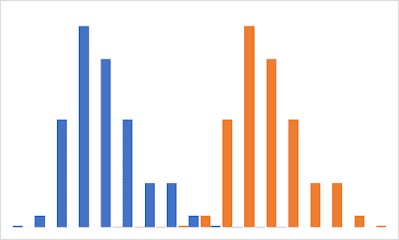ANOVA - Comparing averages of multiple data sets

In an earlier post, we used the Two Sample Mean Test to compare the mean of two samples (duh). If you have 3 samples you could use the same test, and compare between pairs of samples, i.e. sample 1 & sample 2, sample 2 & sample 3, and sample 1 & sample 3. The problem arises when you have many more sample sets. Running this test means keeping track of the permutations. This approach is wastefully repetitive and you are likely to make mistakes. Also, sometimes, you only want to know if there is at least one sample that is different from the rest. Scientific or medical break throughs are rare. In most experiments and trials, there will be no change/difference. A single test that tells you that there is no difference between the samples allows you to move on. Is there a better method to compare the mean of multiple samples? Enter ANOVA Analysis Of Variance (ANOVA) is a statistical method used to compare the means between samples. It tells you if there's any significant d...
